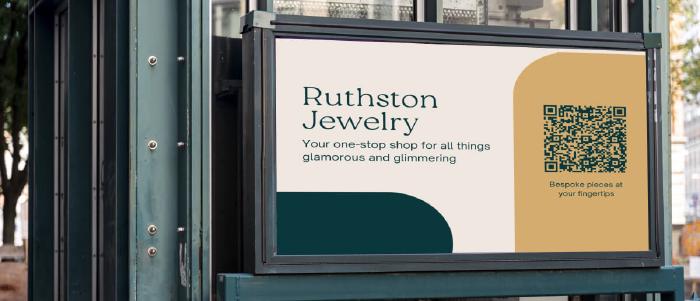
Feb 15 2022
6 min read


Aug
We all have come across the term ‘gamification’; yet misconceptions around the word don’t seem to end. Merely including games in the lesson plan or training program is not gamification.
Gamification is about adding game elements and features to a setup that’s quite the opposite of gaming (e.g. your classrooms). And if you think gamification in education is hyped, the following data will open your eyes.
Challenge-based gamified learning increased student’s performances by 89.45% (Source)
67% of learners find gamification in education more exciting and engaging than traditional ways (Source)
Almost 75% of K-8 teachers in the United States employ digital games to simplify learning (Source)
80% of learners feel they would come up with better results if the learning process includes game-like features (Source)
70% of teachers observed a significant increase in student engagement when they implemented educational video games (Source)
As an educator, if you plan to combine games and education, you must approach it methodically. And to do that, you must be thorough with what gamification means in learning and teaching.
This blog will discuss the same while exploring strategies, examples and digital transformations of gamified learning.
Ask around, and you’ll see what big issues lie around the term. Two people hardly share the same opinion about gamification. Many people mistake the term for anything slightly related to gaming, which is, of course, not the case.
Gartner redefined gamification in this research paper as "the use of game mechanics and experience design to digitally engage and motivate people to achieve their goals." The onus remained on the major elements-
1. Preference of digital engagement to personal engagement
2. Motivating learners to develop skills or drive innovation
3. Enabling the participants to achieve their goals
So, if you’re allowing your K-8 students to play chutes and ladders in the classroom to keep them quiet and thinking you’ve applied gamification, you sure are on the wrong track.
You must keep in mind the major elements stated above, and then, apply game-like features to an educational setting instead of letting students play just any game.
Gamification of lessons aims to build interest and motivation and make learning engaging.
If we look back, gamification has been there for a long time. Educators have always used creative contests and group activities to educate and engage students in a fun way. Only the term ‘gamification’ gained more popularity with technological development and digital revolution.
Why?
Today 58% of Gen Z learners use their smart devices to play online or offline games. More than 2 out of every 3 Millennials in the US love playing video games. According to reports, 90% of video game players admit that it brings instant joy, 79% feel inspired through the games, and 87% experience positive mental stimulation and relief from stress.
So, if you can provide students with a gamified learning atmosphere, don’t you think they’ll become quicker on the uptake? ff

The gamification theory revolves around the most integral motive of helping learners build fundamental skills through fun and entertainment. To make that happen, educators approach it mainly in two forms:
Including games and activities that are designed purely for entertainment purposes but renders educational benefits by delivering certain learning objectives. This is popularly known as the ‘game-based learning approach’.
Adopting elements, mechanics and features of popular game designs in the educational setting to make monotonous lessons interactive and intriguing. This approach is what we mainly refer to as ‘gamification in education’.
Though educational institutes focus more on the second form, it’s imperative to recognize the first form too.
Indeed the classroom is for learning and developing innate skills. But, think about the need for building persistence, confidence, patience, critical thinking, competitive mentality, and skills to deal with failure— the virtues that one needs to acquire. A simple, fast-paced race game, puzzle game, or word game can help learners imbibe those virtues.
The second form gains more approval because in an online or digital learning context, educators can apply it in variety of ways and add a creative structure to their LMS. When implemented correctly, both forms of gamification encourage students to learn new theories, formulas and concepts on their own.

Among many strategies for gamified learning, the following are the most effective.
1. Point systems
Perks:
Build motivation
Track progress
Increase engagement
2. Leaderboards
Perks:
Builds team-work spirit
Develops a competitive frame of mind
3. Badges
Perks:
Students feel recognized
Drives more enthusiasm
4. Challenges
Perks:
Promotes critical thinking
Builds persistence
Evolves go-getter attitude
5. Surprises
Perks:
Channelizes enthusiasm
Reflects individual personalities
6. Avatars or Role-playing
Perks:
Induces creativity
Builds strong communication skills
Impacts overall personality
7. Quests
Perks:
Encourages collaboration
Teaches information gathering & sharing
Builds patience & problem-solving skills
8. Quiz
Perks:
Promotes brainstorming
Builds confidence
Turns information into knowledge
There are many ways to implement gamification in the classroom. Online games, apps, and video games are constantly upgrading their features to communicate better with students.
Here we have listed the most effective games that fulfill gamification objectives and make students adept.
A few examples of learning through video game :
1. Minecraft: Education edition
The new learning-focused version of the popular game makes learning different subjects and concepts easy & fun. The game offers project-based challenges, STEM curriculum, games to explore historical places, and more. It provides students with an immersive digital experience that helps improve creativity and problem-solving skills.
2. Math Blaster
hrough mathematical adventures, it helps students learn counting, basic calculations, geometry, algebra, and more. Multi-level games like Juice Store, Puck’s Pet Shop, and Lost & Found allow learners to gain rewards.
3. Treasure Mountain
The adventure game is customized to enhance problem-solving skills in students. Biking, Waterfall Chase, Camping, and High Swing games yield creativity and brainstorming in learners. App-based gamification
A few examples of app-based gamified learning:
4. Google’s Read Along
It helps kids who have started learning how to read, spell and write. The AI assistant ‘Diya’ recognizes whenever kids face difficulty reading or make mistakes pronouncing. Diya immediately rectifies the kid with audio-visual aids.
5. Kahoot
Teachers can create MCQ quizzes via websites and generate shareable links. Students will receive the link on their smart devices and solve it quickly. The real-time in-class query-solving feature of the app makes Kahoot highly popular.
6. Duolingo
The app gamifies language learning. One can learn more than thirty-seven languages with the app. Games, flashcards, quizzes, and more simplify the languages and help kids learn quicker. Progress bars, experience points, leaderboards, and streaks are major strategies that make it the most-downloaded app for gamification in education.
7. Educandy
It turns out addictive with bright, attractive figures, animated characters, and exciting sound effects. It’s an interactive vocabulary learning app mainly focused on activities and simple games.
Checkout a few examples of online gamification:
8. Blooket
It’s a gamified learning platform with an easy UI and exciting quiz games. Different game modes and levels excite the players and help them learn quicker.
9. Boat Coordinates
Concepts related to quadrants and grids become easy with this boating game presented by Mathnook. The race along the X and Y axes to meet the finishing point is the driving factor of the game.
10. Learn with Socrates
it’s a great innovation in gamification for classrooms. The tool creates a personalized learning path for each learner with fun games, quizzes, points, and ticket rewards. It is a dynamic game-based learning platform.
11. National Geographic Kids
The adventurous trail with Captain John Smith lets one explore ancient Greece and Rome and observe the mythological elements closely. The game uses quizzes, treasure hunts, and other fun activities to help students learn more about History and Science.
12. ABCya
Kids here help the hero Kit Foxtail to crack safes at various locations to return the stolen money to the city people. Countdown starts with each math equation one solves to crack the safes. It’s a fun and exciting way to learn to solve complex math problems within a stipulated time.
Plenty of physical games and contests like Box Drop, Roll-N-Do, Entrance Routine, ESL games, group discussion, debates, and extempore make learning and skill-building relatively easy. Physical or traditional classroom games live side-by-side online & digital gamification to offer students the best of both worlds.

Since its advent, digital signage has transformed experiences across all industries, especially retail, QSRs, hotels, corporates, healthcare, and education. With gamification soaring up in the education field, digital signage has much to offer.
Let’s see how it participates in a game-based learning atmosphere.
Prepare game-based activities and microlearning modules on slides and present the same using digital signage screens. The appealing vibrancy of the audio-visual content helps students engage even more with their lessons and learn faster.
Animated explanations of concepts or mathematical formulas, pictorial narratives, picture compositions, image and video-based demonstrations of biological concepts can be played on digital screens.
Using Pickcel apps like Web URL, YouTube Video, and RSS Feeds, educators can bring up any web-based content on the screens.
Teachers can also prepare quiz games and word puzzles to play on the digital reader boards.
Gamification is further intensified in education with interactive technology.
Interactive digital signage can make learning more enjoyable. Educators can transform the classroom into an interactive knowledge hub with multi-touch screens.
Students can access learning applications or websites directly on the interactive panels and experience a dynamic learning process.
Split-screen technology allows teachers to keep multiple learning modules and game-based exercises open on the digital display-turned-interactive board. Students who are visual learners, feel like going and interacting with the study materials on their own. Thus they learn while having fun.
You may also like: Top ways to use digital signage in schools & colleges
Smart gamification is not limited only to the classroom. Imagine holding a virtual contest or webinar for your students. Maybe you plan to do a presentation or virtual tour of historical interests with the students of all sections. How will you do that without interactive digital signage software?
Teaching and learning are no longer one-way processes; we all know that. But without digital signage, implementing two-way or multi-way interactivity in the class or beyond is quite impossible. Many schools and training institutions are embracing digital signage to make gamified classroom education more impactful.
Online and hybrid teaching as well as guest lectures are now more productive due to digital signage solutions. Teachers can visit a place for real and arrange for a conference with students in the classroom via interactive digital signage technology.
You can do more with digital signage than you can even imagine!
So…
Now that you know the basics of gamified learning and have a long list of games to employ, don’t be late to update your LMS with modules aided with game-based education.
And guess what, we will be back with more blogs featuring more ideas and tips on the gamification of education. Stay tuned!
Important links:
Pickcel’s digital signage solution for educational institutions
Key features of the Pickcel digital signage content management system
Related blogs:
Take complete control of what you show on your digital signage & how you show it.
Start Free Trial Schedule My Demo
Feb 15 2022
6 min read

Apr 19 2024
7 min read

Jan 12 2024
4 min read

Oct 15 2023
8 min read